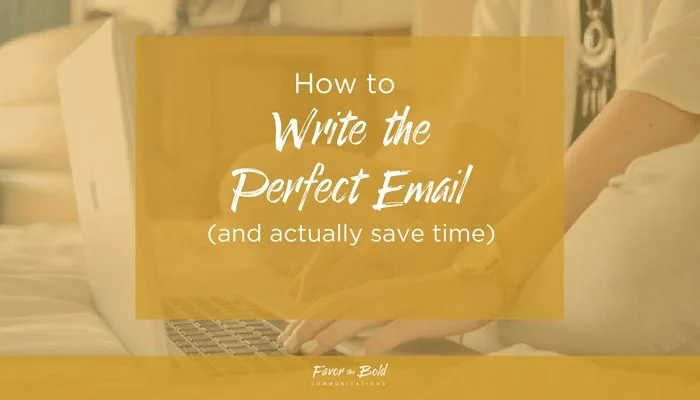I think we can all agree that professional networking events are the worst.
You’re in some freezing conference center or a cheesy bar with bad wine, telling people what you do when you know they couldn’t care less, worrying every time you shake someone’s hand that yours is cold or sweaty (or both. Mine is somehow always both.), and handing out business cards like they’re free samples at the grocery store.
And then, on top of all of that awkwardness and sweaty germ-sharing, you have to use your elevator speech. My god, I hate the elevator speech.
I don’t know who came up with that whole idea, but how the hell is the correct response to, "So, what do you do?” this:
“I’m a communications professional with a knack for persuasive storytelling. My colleagues often compliment me for my thoughtful and engaging presentations, so I’m looking for insight as to how I can best position myself for a role in production or videography at a social impact start-up.” ← Actual recommended elevator pitch.
Seriously, can you even imagine busting that out every time one of your aunts asks you what you do for a living?
Since I want to be part of the elevator pitch solution, not part of the problem, I’ve put together some tips on how to sell yourself, without sounding like an infomercial.
1. It’s not a pitch, it’s a conversation
This is where so many people go wrong with their elevator speech. They see it as a pitch, not a conversation between two human beings. Advice like, “Start with your why” is great for About pages, but sounds super awkward when someone is just making small talk.
“But Elissa, everyone tells me I need an elevator speech!” And you do.
But the point of preparing an elevator pitch isn’t to recite some long, confusing mission statement, throw your business card at the person and then run away hoping they’ll call you.
The point is to start a conversation.
It's to engage them, get them to ask questions about what you do and ask them questions so that as the conversation goes on, you can adjust your pitch to their needs.
So stop “pitching” people, and start just talking to them.
2. Be specific, use examples
Imagine telling a friend about a great new restaurant you went to. How would you describe it? Would you say, “I went to this charming farm-to-table bistro that specializes in creative, home-grown, seasonal Southwestern French specialties, served in a warm, inviting industrial-chic space.”?
Of course you wouldn’t. Or if you would, please just note that you’ll be able to read the rest of this advice much better if you remove your head from your a--, because nobody talks like that.
No, you’d probably say something like, “I went to this new restaurant last night and ohmygod, the roasted duck was so good, I wanted to stick my face in the plate and motorboat it.” Or at least that’s what I’d say...
See the difference?
Real people don’t speak in flowery generalities, they speak in concrete examples.
We make things tangible and easy to relate to. Your friend doesn’t need to guess why they should go to a charming farm-to-table restaurant, they know they should go for the punch-you-in-the-face roasted duck.
Think of your elevator pitch the same way. Don’t use a high-level mission statement to tell someone what you do. Just tell them what you do, using the most delicious, crispiest, duck-flavored example you can think of.
3. Lose the jargon
Oh, jargon. I love jargon. Jargon is the lazy writer’s best friend: “This acquisition will help us expand our global reach in destination markets by leveraging synergies to capitalize on supply chain efficiencies.”
It almost makes me miss working in corporate communications.
But the fact is, using jargon in your elevator speech is lazy and selfish.
Tough love, I know, but it’s true. Using jargon means you don’t care if you confuse the other person and that you’d rather risk losing their interest than finding another word for what you're saying.
That’s not to say it isn’t tempting to sneak some buzzwords in there. It’d be so much easier if I could tell potential customers, “I help creative businesses create copy that connects and content strategies that convert by helping them develop effective branding and business positioning.” That’s what I do, so that should be my pitch, right?
Oh hell no. That right there? That’s jibberish. To 99% percent of the population, that’s jargony BS and they’ll check out after the first alliteration. Please, for the love of god, don’t start with a pitch like that.
Because remember, it's a conversation. Maybe, over the course of the discussion, I’ll realize the person I’m talking to understands that “copywriting” has nothing to do with trademarks. But maybe not. So I’m not going to risk losing their interest by using buzzwords just because it's easier for me.
Also, remember: when the person you’re talking to can show you that they know more than you think they do, they’ll feel smart. This is a good thing. When someone feels good while talking to you, they're more likely to like and trust you. So give your audience an opportunity to “impress” you. It’s good for business.
4. Adjust your pitch to your audience
Please don’t walk around waving the same recited sales pitch at anyone who will listen. How you tell your parents or your hairdresser what you do should not be what you tell a potential client or employer.
Believe me, I’ve tried. My dad looked at me blankly and said, “Well that sounds nice,” before changing the subject.
So what does adjusting your pitch to your audience look like? Let’s break it down by audience.
Not a potential client
This is the dad and hairdresser group (unless hairdressers fall into your potential customers bucket-- they do for me.) You’re not trying to sell to this person, but you are trying to help them understand what you do.
Why even bother?
Because word of mouth is a thing, guys. This random person has friends and family who may just want what you got, so use the opportunity to turn this person into a walking advertisement.
How do you do that? Focus on your “what,” not your “why” or “who.”
Instead of just telling them a job title or reciting your mission statement, give them a clear example of a specific thing you do. You want to give the person only one point to remember so that it’s easier for them to tell anyone and everyone what you do.
Not sure if they're a potential client
This group is a little trickier. You don’t know if it’s a potential client, so you don’t want to be too simplistic, but you also don’t want to confuse or overwhelm them with a pitch.
So here’s what you do: Still be specific about your “what,” but also add some of the “who.” And this time, give some concrete examples.
This will help the person to see whether or not what you do is for them. And remember, it’s a conversation, so ask them what they do and, if relevant, use that to share an example that better illustrates how you could help them.
Potential client
Now’s the time to go for it with your “why.” But remember, it’s a conversation, not a mission statement, which sounds awkward and salesy when said out loud.
Seriously, read this out loud:
“I’m a communications strategist and coach who helps service-based creative business owners turn their ideas into words that strengthen their brand and attract their ideal clients.”
Ugggh. It’s a mouthful. It’s awkward. It sounds like a sales pitch.
Now try this.
You sound like a human again, don’t you?
Now, I know all of this sounds like I’m super against mission statements. I’m not.
It’s critical to be clear on your what, why, who and how, because those serve as your roadmap for everything else. I’m definitely not telling you to toss your mission statement-- I'm simply saying that it's different from your sales pitch.














![How to boost your brand offline-- and get more business [Part 3]](https://images.squarespace-cdn.com/content/v1/5671d7a82399a31f114f4c55/1477565172008-2K7456WNHWYM99T12HTV/How+to+boost+your+brand+offline--+and+get+more+business.jpg)